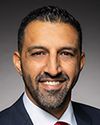Thank you, Mr. Chair.
I would like to begin by thanking the witnesses who are before us today to talk about the reality of intermunicipal bus transportation.
I must admit that I have learned a lot from listening to your testimony. Coming from Quebec, I must say that I don't really know the reality of western Canada. In any case, I can see how traumatic the loss of Greyhound must have been, since everyone, witness after witness, has spoken about it.
In Quebec, I would say we are less familiar with this. There are intercity transportation services that were hard hit during the pandemic, but I couldn't say that there was as big a crisis as what we saw in the west, where there were serial closures, although there were significant financial difficulties experienced by Quebec carriers.
Mr. Cassidy, in your intervention, you said that the private sector could be made eligible for certain forms of funding to provide intercity transportation services, given that it is hardly profitable. I've had the opportunity to meet with several bus operators in Quebec. They said that what they found difficult during the pandemic was not having help paying for their buses. Even though there were measures to help with labour and rent, the buses did not pay for themselves, even if they were immobilized and there was no one on board.
In this context, it would make sense to implement a program that would revive the bus industry and compensate for the difficulties experienced in the past by operators such as yourself. However, I know that we also have a shared commitment to transition to clean energy, to achieve carbon neutrality and to reduce greenhouse gas emissions.
If a program aimed at the electrification of buses, for example, were to be put in place, would you see some value in it?




